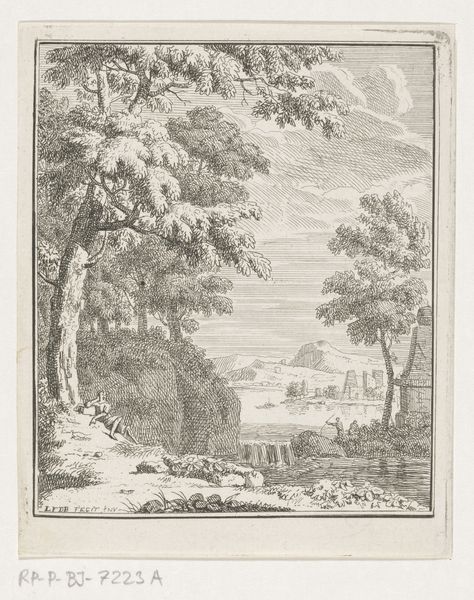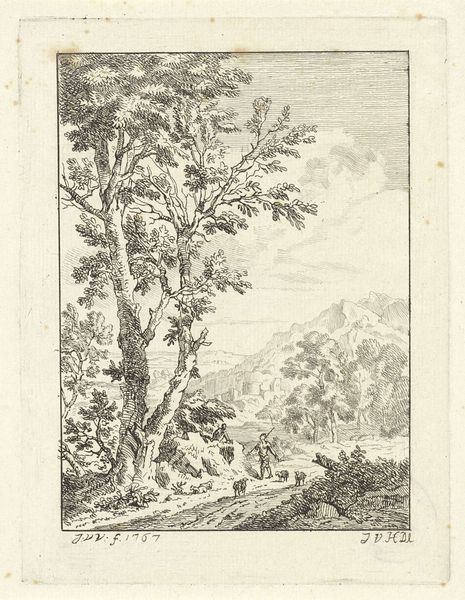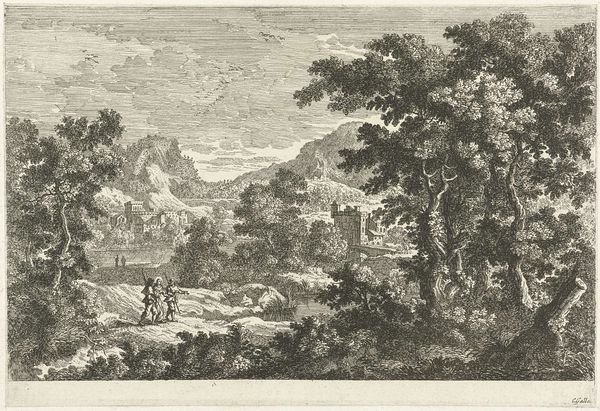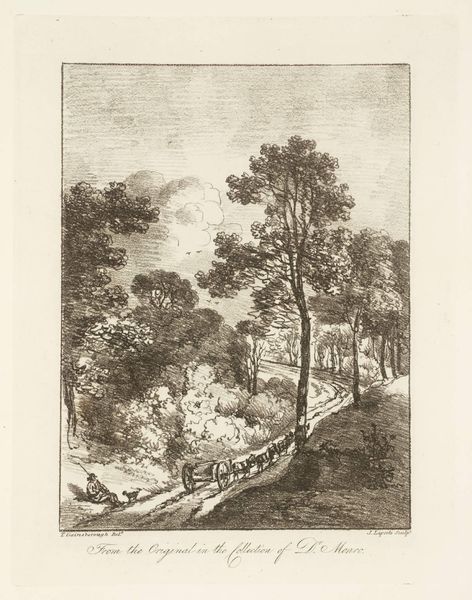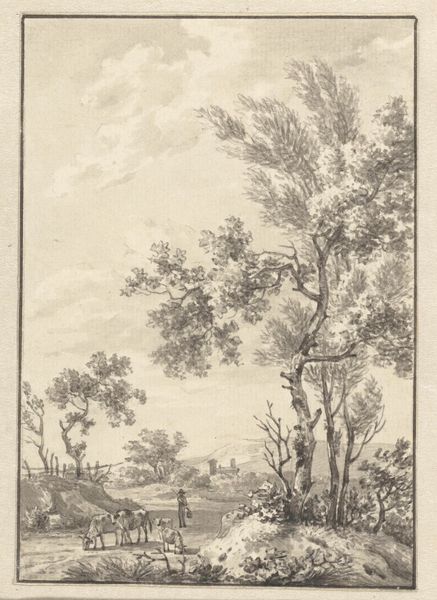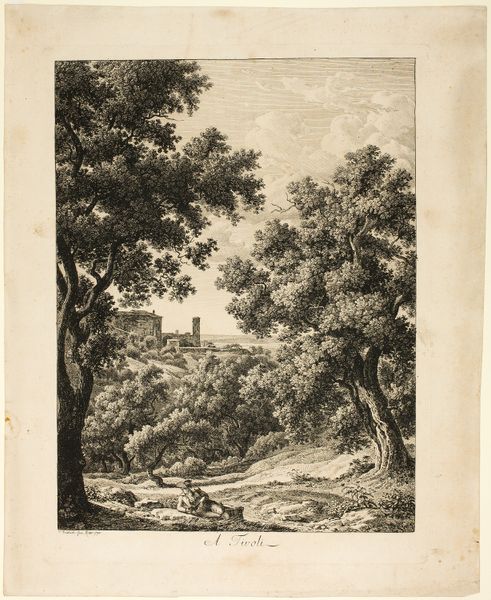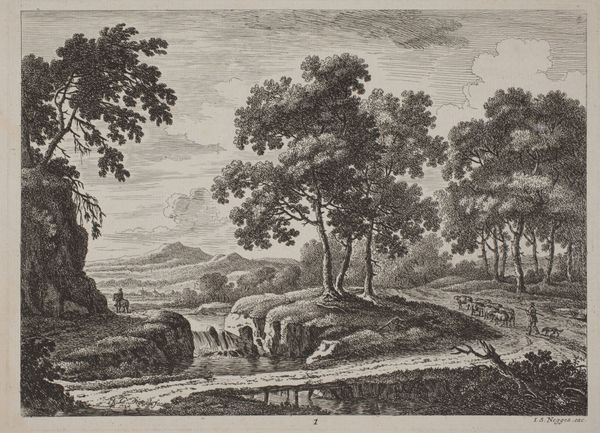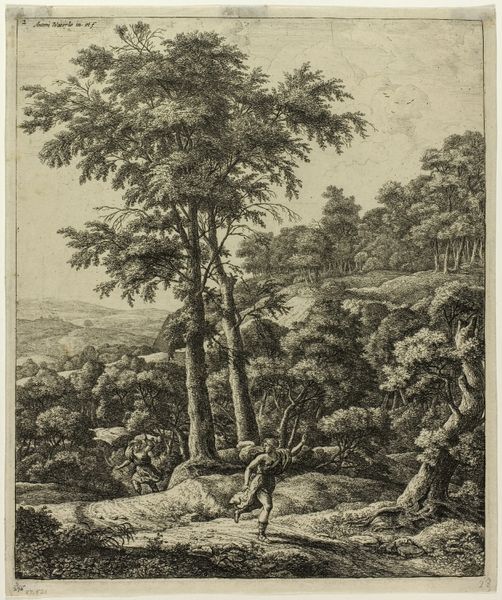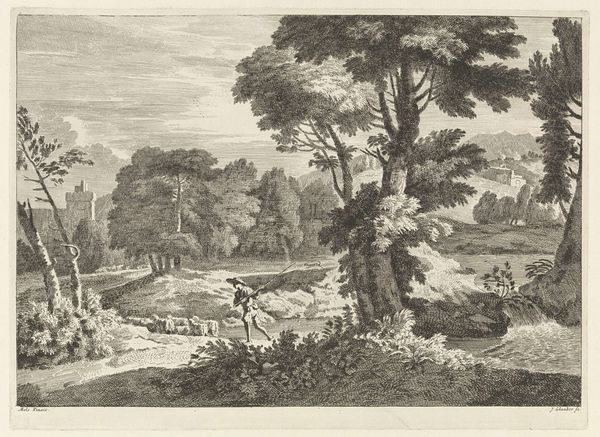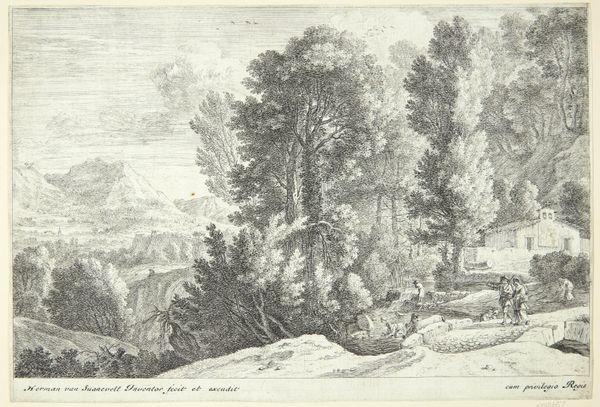
etching, engraving
#
baroque
#
dutch-golden-age
#
etching
#
old engraving style
#
landscape
#
etching
#
forest
#
engraving
Dimensions: height 220 mm, width 155 mm
Copyright: Rijks Museum: Open Domain
Johannes Gottlieb Glauber made this print, "Two Shepherds in a Landscape," sometime between 1656 and 1703. It depicts an idyllic rural scene, resonating with the 17th-century Dutch Republic's burgeoning interest in landscape art. The image evokes a sense of harmony between humans and nature, a common theme in Dutch Golden Age art. Consider the influence of the Dutch countryside, newly independent after the Eighty Years' War. The land became a symbol of national identity and prosperity, as well as the rise of a new merchant class. Glauber's choice of subject reflects a self-consciously progressive shift away from religious and historical painting towards everyday life. This print, though seemingly simple, subtly critiques the institutions of art by celebrating the ordinary. To understand this artwork fully, we need to research the social and economic conditions of the Dutch Golden Age. In doing so, we recognize that the meaning of art is always contingent on its social and institutional context.
Comments
No comments
Be the first to comment and join the conversation on the ultimate creative platform.
